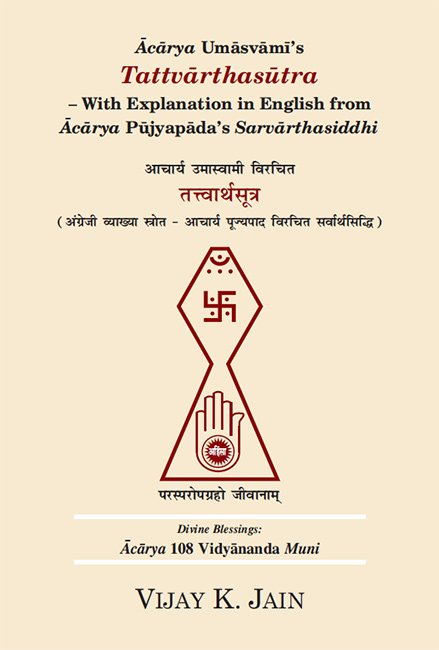Tattvartha Sutra (with commentary)
by Vijay K. Jain | 2018 | 130,587 words | ISBN-10: 8193272625 | ISBN-13: 9788193272626
This page describes the extent of the conventional time (vyavahara-kala) which is verse 5.40 of the English translation of the Tattvartha Sutra which represents the essentials of Jainism and Jain dharma and deals with the basics on Karma, Cosmology, Ethics, Celestial beings and Liberation. The Tattvarthasutra is authorative among both Digambara and Shvetambara. This is verse 40 of the chapter The Non-living Substances and includes an extensive commentary.
Verse 5.40 - The extent of the conventional time (vyavahāra-kāla)
Sanskrit text, Unicode transliteration and English translation of Tattvartha sūtra 5.40:
सोऽनन्तसमयः ॥ ५.४० ॥
so'nantasamayaḥ || 5.40 ||
It (the conventional time) consists of infinite (ananta) instants (samaya). (40)
Hindi Anvayarth:
अन्वयार्थ: [सः] वह काल द्रव्य [अनन्त समयः] अनन्त समय वाला है। काल की पर्याय यह समय है। यद्यपि वर्तमानकाल एक समयमात्र ही है तथापि भूत-भविष्य की अपेक्षा से उसके अनन्त समय हैं।
Anvayartha: [sah] vaha kala dravya [ananta samayah] ananta samaya vala hai | kala ki paryaya yaha samaya hai | yadyapi vartamanakala eka samayamatra hi hai tathapi bhuta-bhavishya ki apeksha se usake ananta samaya haim |
Explanation in English from Ācārya Pūjyapāda’s Sarvārthasiddhi:
The extent of the real (mukhya) time (kāla), characterized by the instrumentality of change (vartanā) in substances, has been described. What is the extent of the conventional (vyavahāra) time, inferred from modifications in substances?
The present consists of one instant. Still the time is said to consist of infinite instants, as the instants of the past and the future are infinite. Otherwise, this sūtra is intended to determine the extent of the real (mukhya or niścaya) time (kāla). Though the point (unit) of the time is one ‘samaya’, it is spoken of figuratively as infinite (ananta), as it is the cause of the continuity of being–vartanā–underlying infinite modes (paryāya). Further, the ‘samaya’ is the smallest unit of the time, and multitudes of ‘samaya’ constitute ‘āvalī’, etc.
The word ‘samaya’ is used in both senses–dravyārthika and paryāyārthika. The sense used in this sūtra is paryāyārthika. Both, the real-time (mukhya or niścaya kāla) and the conventional-or figurative-or empirical-time (vyavahāra kāla) are established. The ‘samaya’, the mode (paryāya), is the smallest unit of the empirical-time (vyavahāra kāla); its multiples are ‘āvalī’, ‘ucchvāsa’, etc. Now the mode (paryāya) cannot exist without the possessor-of-the-mode (paryāyī). Hence, the real-time (niścaya kāla) is also established.
